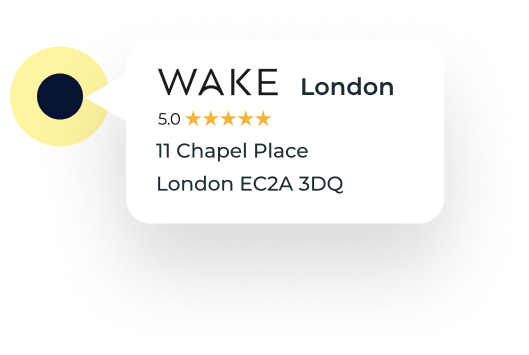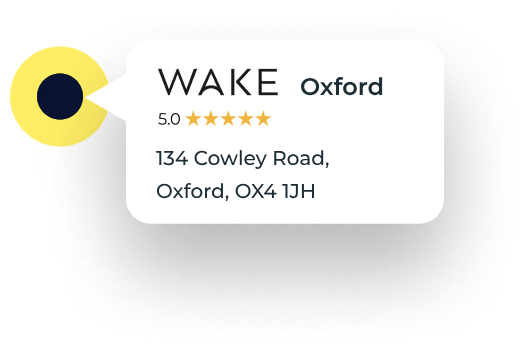Can Amazon exert influence over your brand?
Yes, Amazon is the biggest online retailer in the world, and yes we all want to share in the incredible opportunities selling on Amazon provides, but there are some caveats, particularly for mature brands.
First, let me give you some history of Amazon, and perhaps more importantly, Amazon Marketplace.
Founded by Jeff Bezos in 1994 with $10,000 of his own money, Amazon’s first iteration was as an online bookstore, but at the back of Bezos’s mind was always explosive growth and becoming the ‘everything’ store.
As of today, this has certainly happened but along the way, something else occurred
Bezos came up with the idea for Amazon Marketplace.
Originally envisaged as a way for shoppers to find rare and collectible books and other specialty items, Amazon initially enabled third-party sellers to sell used merchandise in what it called zShops (now known as the Marketplace). This sparked a huge increase in the volume of transactions on Amazon. Over the first four months, a quarter of a million customers bought something using the service.
Talking about the success of Amazon Marketplace Jeff Bezos says:
“A dreamy business offering has at least four characteristics. Customers love it, it can grow to very large size, it has strong returns on capital, and it’s durable in time — with the potential to endure for decades, When you find one of these, don’t just swipe right, get married.”
Now, in 2019, Amazon Marketplace accounts for more than half of all Amazon online sales, generating more than a billion dollars for Amazon’s bottom line.
Amazon Marketplace is the home of four distinct seller types:
- Brands selling their own products
- Retailers selling third-party brands products
- Unbranded products
- Retailers selling fakes
How Amazon works for sellers – and how Amazon works for itself
When you start thinking about this, it gets very complicated for brands, very quickly.
- If you’re a brand selling your own products on The Marketplace, if you do it right, and optimise your listings correctly, and you’re looking after your customers, you’re going to do very well indeed, until?
- The wholesale customers you sell your brand too have the same realisation and start listing your brand on the marketplace, often at discounted prices until?
- The fakers start undercutting the third party undercutters, seriously devaluing your brand until?
- Amazon steps in with a big stick. They’ve seen that everyone is doing well and they want a piece of the pie. In other words, Amazon wants to sell your brand at the best possible price and cut out the middle man, you…
We don’t want to paint too gloomy a picture of The Marketplace because whatever size business you are, and however well developed your brand is, it is a wonderful opportunity to make a lot of money by accessing this ready-made audience.
The truth is that Amazon always has the customer experience at the heart of it’s, sometimes seemingly, draconian actions.
To quote Jeff Bezos views on customer service:
“The most important single thing is to focus obsessively on the customer. Our goal is to be earth’s most customer-centric company.”
Be brand smart – things you can do to maintain maximum influence over your brand
You needn’t worry about it though as there are a number of simple tactics that will both protect your brand from the incursions we mentioned earlier, and ensure your brand has the best possible relationship with Amazon.
These tactics really fall into two parts:
Protection from Amazon
Firstly, to protect your legal brand and fight what you would call ‘Brand infringement’ by the fakers, you need to enroll in the Amazon Brand Registry. It’s fairly simple – you need a registered trademark, you need to be able to verify yourself, and you need an Amazon account. All fairly straightforward if you’re a legitimate brand wanting to fight back against the nasty little fakers. You should also use Amazon Enhanced Brand Content, this enables you to include a unique brand story, enhanced images and text placements in your listings. You have to be verified in the Amazon Brand Registry, but that shouldn’t be a problem if you’re legitimate.
Self Protection
And secondly, you need to protect yourself against what I would call ‘Brand incursion’, Individuals and organisations that want to leverage your brand for their own ends.
As I mentioned earlier, there are a number of ways to do this:
- Make sure your listings are optimised for your brand and include a significant warning against brand incursion.
- When you sell to third parties make sure your contract with them stipulates that they either can’t sell your products on Amazon or, if they do, put in some strict guidelines that stop them undercutting you or fiddling with your brand assets.
According to James Thompson of Buy Box Experts:
“Products showing up on the Amazon marketplace may be a culmination of a brand’s global distribution sins. If the brand isn’t in control of its global distribution, a product will mysteriously arrive on Amazon, offered by unknown sellers, and at lower prices.”
Pay Attention
You might have dotted all the ‘I’s’, and crossed all the ‘T’s’ but if you’re a successful brand somebody, somewhere will be trying to fake your brand. Make sure everything is trademarked correctly in the territories you operate in and work closely with your legal team to chase down any brand infringement you find.
Protect yourself from Amazon
Amazon will come calling at some point if you’re being very successful because they will want a piece of the pie. They are after all intent on staying the #1 retailer in the world and you don’t do that by playing nice all the time (don’t forget it’s just business). In truth, there’s not a lot you can do about this except sell at your keenest price, fulfill all your contractual commitments to Amazon to the letter, and don’t sell anything on Amazon that Amazon doesn’t sell itself. Because at some point you may become the competition, and that’s not what you want.
The Good News
You may be thinking “why am I bothering” by this point, but don’t despair. Although there is work to be done to protect your brand on Amazon the road ahead can be pretty glorious.
Amazon has a multitude of brand advertising opportunities for you to leverage on its platform. Amazon is now competing with the likes of Facebook and Google for brand advertising revenue due to it’s increasing ROI of advertising spend.
Chris Apostle from Havas Media says:
“Over 90 percent of searches for products that start on Amazon end with a purchase, even though that user may end up on social channels,” and “Some of our clients are increasing their ad spend on Amazon by as much as 300%, with some saying they’ll increase by the same amount next year”
Shoppers on Amazon are there to do one thing, and that’s to shop. If you can intersect with them at the right moment when they’ve reached their buying decision you’re much more likely to make the sale.
Interesting fact about Amazon we bet you didn’t know. Have you ever wondered why Amazon is the only website that allows you to buy with ‘One-Click’?
Amazon has held a patent for ‘One-Click Purchasing’ since 1999.





